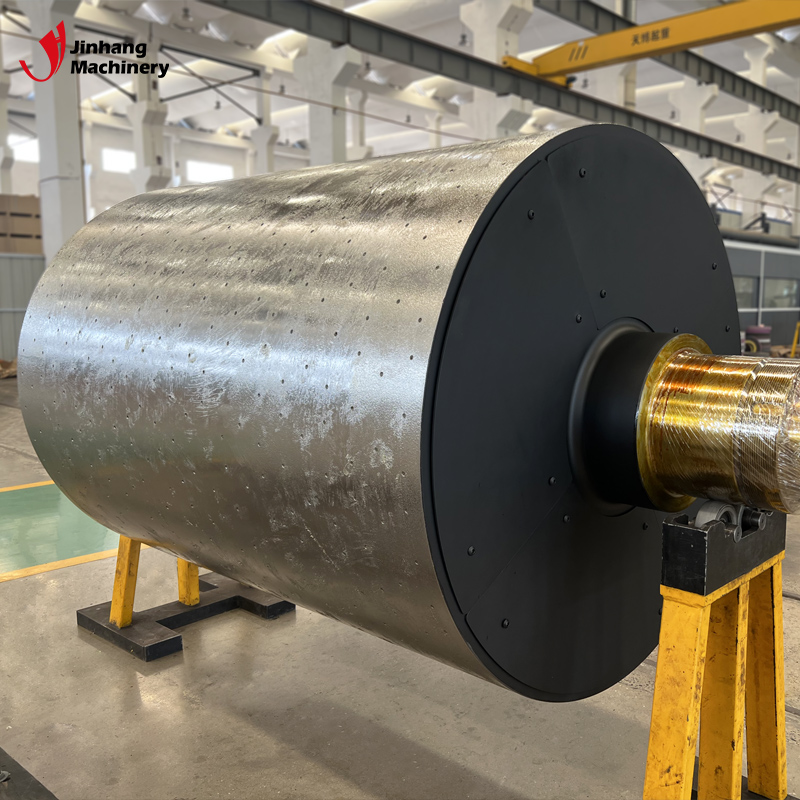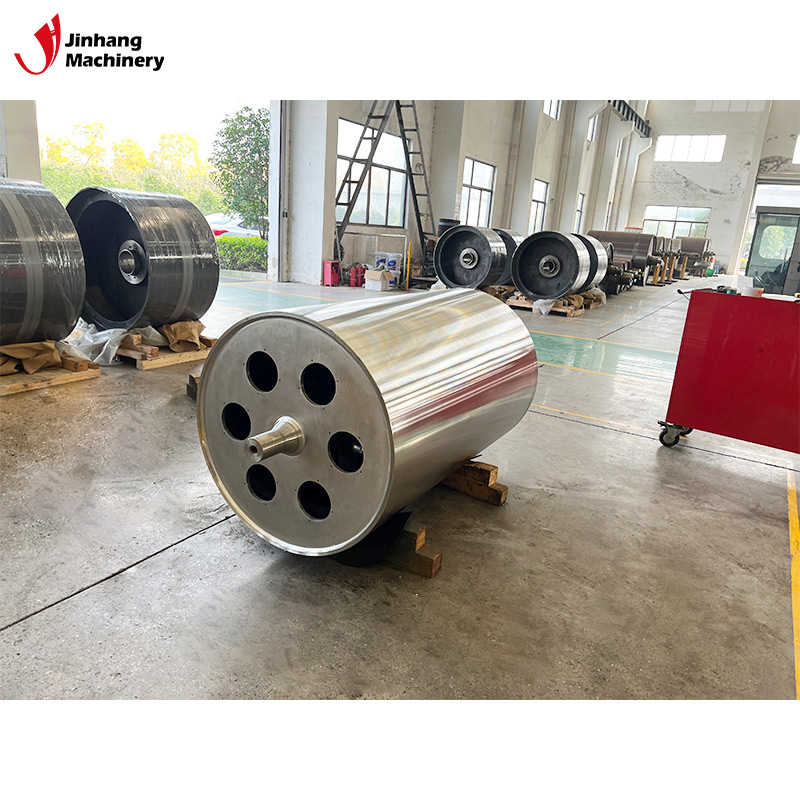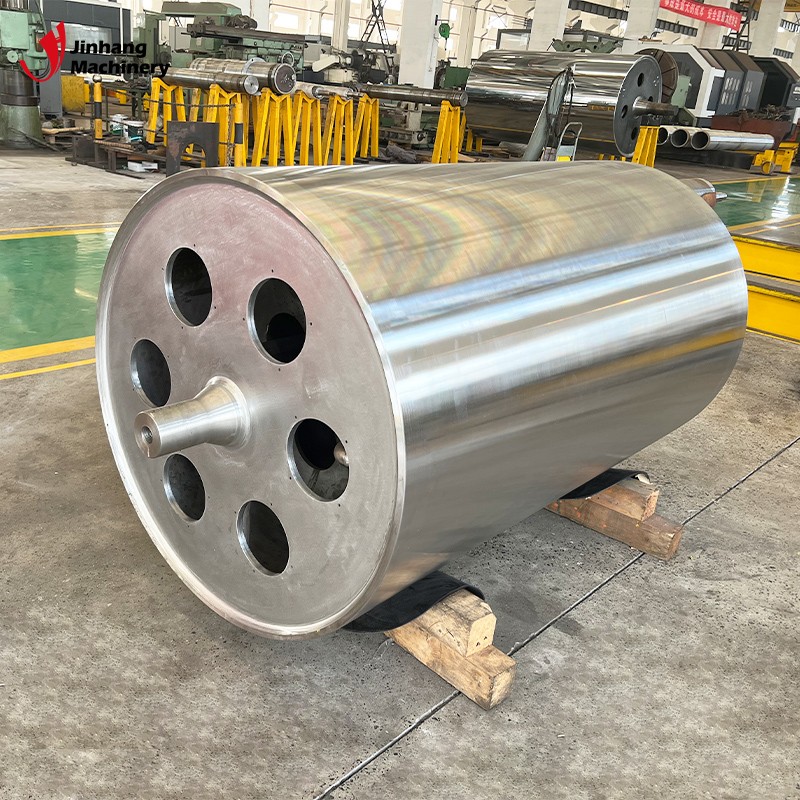Why does the solar cell industry need to use chill rollers?
The solar cell industry is a rapidly developing high-tech field, and the production process involves precision manufacturing, high-temperature operation and high-quality control. In this process, chill rollers have become an indispensable and important equipment in the solar cell industry because of their key role in temperature control, material handling and product quality assurance.
This article will discuss in detail why the solar cell industry needs to use chill rollers and analyze their specific applications in different production links.

The role of chill rollers in the solar cell industry
The production process of solar cells includes multiple high-temperature treatment and precision manufacturing links, which have extremely high requirements for temperature control and material handling. Chill rollers play a vital role in these links, mainly in the following aspects:
● Temperature control: The chill roller can quickly and evenly reduce the temperature of the material after high-temperature treatment to prevent the material from deforming or degrading due to overheating.
● Material handling: The chill roller provides stable support and traction during material handling to ensure the flatness and thickness uniformity of the material.
● Product quality assurance: Through precise temperature control and stable material handling, the chill roller can effectively improve the surface quality and physical properties of solar cells and ensure the high quality of the final product.

Which link in the production of solar cells requires the use of cooling rollers?
The production process of solar cells includes several key links, and each link has different requirements and functions for cooling rollers. The application links of cooling rollers in the solar cell industry include: silicon wafer manufacturing link, photovoltaic thin film manufacturing link, battery module manufacturing link, and thin film battery winding link
Silicon wafer manufacturing link:
Silicon wafers are the basic materials of solar cells, and their manufacturing process includes multiple steps such as cutting, polishing and cleaning of silicon ingots. The temperature of the cut silicon wafers is usually high, and they need to be cooled quickly to maintain their physical properties and dimensional stability. The role of cooling rollers in this link is particularly important. The role of cooling rollers in the silicon wafer manufacturing link includes: rapid cooling and ensuring flatness.
● Rapid cooling: The cut silicon wafers need to be cooled quickly to be shaped. The cooling roller quickly conducts heat away through contact with the surface of the material, reduces the temperature of the silicon wafer, and prevents deformation and performance degradation caused by overheating.
● Ensure flatness: The cooling roller provides uniform pressure during the cooling process to ensure the flatness and thickness uniformity of the silicon wafer, and avoid warping and uneven thickness.
Photovoltaic film manufacturing link:
Photovoltaic film is a new type of solar cell material with the advantages of being light, flexible and efficient. Its manufacturing process includes steps such as film coating, drying and cooling. The coated film usually needs to be cooled quickly to solidify and improve its adhesion and stability. The role of the cooling roller in the photovoltaic film manufacturing link includes: film solidification and surface quality.
● Film solidification: The coated film needs to be cooled quickly to solidify. The cooling roller improves the adhesion and durability of the film through uniform cooling effect, and prevents the film from falling off or deteriorating.
● Surface quality: The cooling roller provides smooth support and traction during the film manufacturing process, ensuring the smoothness and uniformity of the material surface and improving the overall quality of the photovoltaic film.
Battery module manufacturing link:
The solar cell module is composed of multiple solar cells, and its manufacturing process includes steps such as series connection, packaging and cooling of the cells. The packaged battery module usually needs to be cooled to maintain its physical properties and dimensional stability. The role of the cooling roller in the battery module manufacturing link is mainly reflected in: packaging material solidification and deformation prevention.
● Encapsulation material curing: The encapsulated battery components need to be cooled quickly to solidify the encapsulation materials. The cooling roller ensures the adhesion and durability of the encapsulation materials by rapidly cooling down, and prevents the encapsulation materials from falling off or deteriorating.
● Prevent deformation: The cooling roller provides stable support during the encapsulation process to prevent the battery components from deforming due to temperature changes, and ensure the dimensional stability and consistency of the battery components.
Thin-film battery winding link:
Thin-film solar cells are a type of flexible solar cells, and their production process includes steps such as film coating, drying, winding and cooling. The wound film usually needs to be cooled to maintain its physical properties and dimensional stability. The role of the cooling roller in the thin-film battery winding link includes: film cooling and improving production efficiency.
● Film cooling: The wound film needs to be cooled quickly to maintain its physical properties. The cooling roller ensures the flatness and thickness uniformity of the film through a uniform cooling effect, and prevents the film from deforming due to temperature changes.
● Improve production efficiency: The cooling roller provides stable support and traction during the winding process, improves the winding speed and production efficiency, and reduces the downtime of the production line.

Practical application case analysis of cooling rollers
In order to better understand the application of cooling rollers in the solar cell industry, we can analyze its role and effect in detail through some actual cases.
Case 1: Improvement of silicon wafer manufacturing process in a large solar cell factory
In the process of silicon wafer manufacturing in a large solar cell factory, the traditional cooling method cannot meet the needs of efficient cooling, resulting in frequent deformation and performance degradation of silicon wafers. By introducing efficient cooling rollers, the silicon wafer manufacturing process of the factory has been significantly improved. The rapid cooling effect of the cooling roller effectively prevents the silicon wafer from overheating and deformation, ensures the dimensional stability and physical properties of the silicon wafer, and improves production efficiency and product quality.
Case 2: Optimization of coating process of a photovoltaic thin film manufacturing company
In the coating process of a photovoltaic thin film manufacturing company, due to incomplete film curing, the film adhesion is poor and easy to fall off. By using cooling rollers, the coated film can be cooled quickly, the film is fully cured, and the adhesion and durability are improved. The uniform cooling effect of the cooling roller also improves the smoothness and uniformity of the material surface, significantly improving the quality and market competitiveness of photovoltaic films.
Case 3: Packaging process upgrade of a solar cell module factory
During the packaging process of a solar cell module factory, the traditional cooling method could not effectively solidify the packaging material, resulting in the packaging material falling off and deterioration. By introducing high-efficiency cooling rollers, the packaged battery components can be cooled quickly, and the packaging materials are fully solidified, ensuring the adhesion and durability of the packaging materials. At the same time, the stable support and traction of the cooling rollers ensure the flatness of the battery components, significantly improving the packaging quality.
